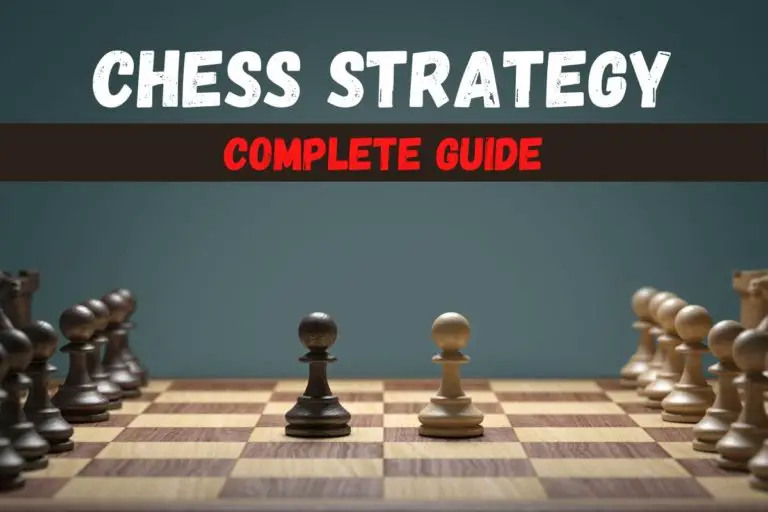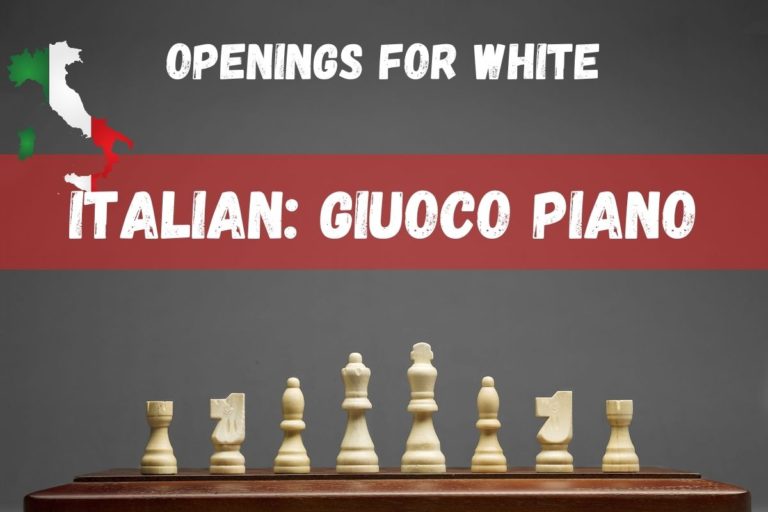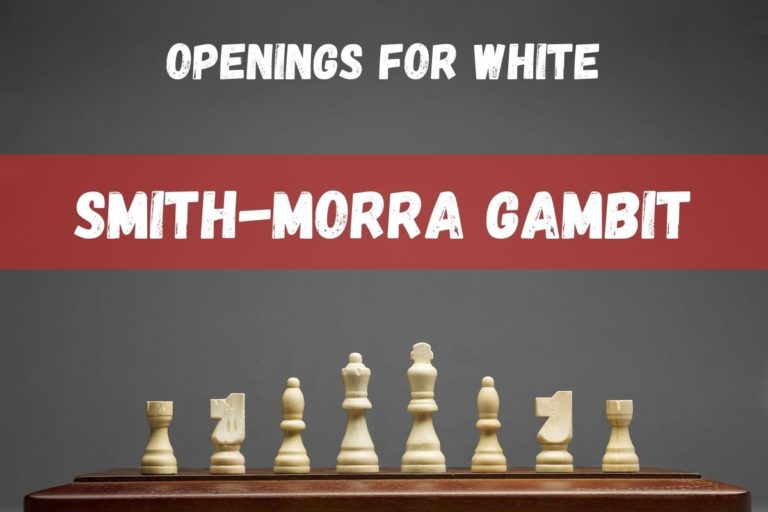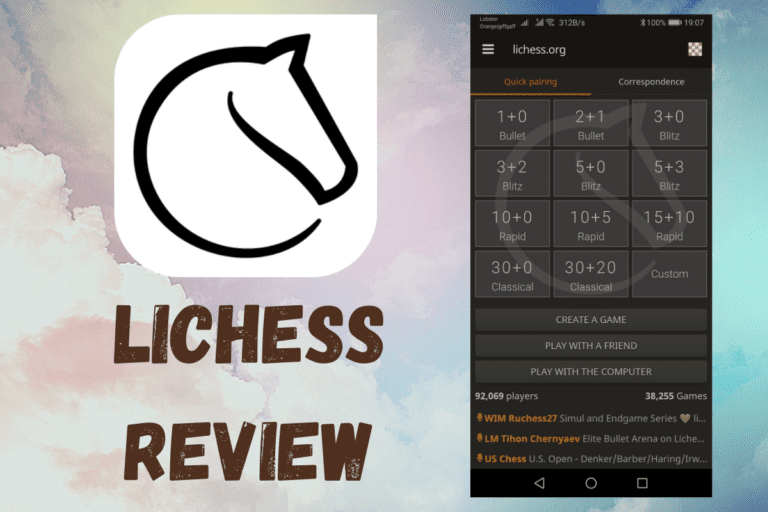How to Force Checkmate with Pawn and King vs Lone King
⭐⭐⭐ Take 5 minutes to read and improve your chess game ➡️ : This article was first published on, and is Copyright of Chessquestions.com
As a beginner in chess it is quite likely you have found yourself in a game where one side has a King and Pawn and the other just a lone King.
If enough pieces are traded, sacrificed or blundered at the lower levels of chess, and sometimes, although more rarely in higher-level games, we have a king and pawn vs king endgame
It is essential to understand how to win this endgame or what opportunities if you are the lone king holder you may have to avoid defeat.
The king and pawn vs lone king endgame is a very common occurrence in chess games and there are some simple rules to learn and understand to dictate a number of possible outcomes from the position. There are ways to ensure the promotion of your pawn, and as the lone king, ways to ensure defeat is avoided by forcing a draw.
By the end of this article you will be a master of ensuring a win against the opposition when you have just a king and pawn vs a king, and what you need to avoid defeat if you have only the lone king left on the board
How to Win the King and Pawn Endgame
Here are some things to consider, check and understand to be able to assess your chance of victory when the battle comes down to a King and Pawn Endgame.
Pawn Majority
First and foremost, since we are talking just kings and pawns, let’s just ascertain how many pawns are on the board. What is the pawn majority?
If you have 3 pawns playing against 2 pawns, one thing you will want to figure out is if there is an opportunity to get past the opponent’s pawns for a chance to promote.
If the way is blocked but you have 3 pawns playing 2 pawns, it should be easy enough to set up a situation whereby you can sacrifice one pawn so as to create the passed pawn opportunity for another.
Of course, we may already be at the king and pawn vs lone king stage of the game and this will not apply, so now we have to look at the Rule of the Square. Something both sides should be aware of.
Rule of the Square and Key Squares
There is an easy rule to remember when it comes down to King and Pawn vs King in the endgame to understand if a passed pawn can promote unchallenged and that is the Rule of the Square
The Rule of the Square in chess determines whether a passed pawn can gain promotion to a Queen without the support of its King. If the enemy King can reach the square before the pawn moves it can capture, if not, pawn promotion without King support and defeat is inevitable.
So let’s see what we have to look for and how to identify the Rule of the Square
How many squares is your pawn from promotion?
However many number of squares the pawn is from the enemy back rank and promotion is the square number. You can also take a look at the diagonal route [Pawns can not move diagonally of course], to the back rank and draw a line back to the rank that the pawn is on – This creates the triangle that is half the square that is required to get the job done.
If the enemy king can not move to enter this square it means that the pawn is able to continue advancing to the back rank and promotion unchallenged and avoid capture from the enemy King.
In normal circumstances, the player with the long King should have identified their inability to prevent the promotion and resigned, but sometimes, players will continue to play on banking on you not being able to finish the job, or especially if there are some time issues pending.
What if the King is within the Square in a Pawn and King Endgame?
If the enemy king can get into the square it can prevent you from promoting and gaining the Queen, worse still it can capture the pawn and force a draw by way of two king stalemate.
If this is the case, abandon any attempt to promote the pawn with a lone attempt and prepare to work your pawn and king in tandem to get the needed promotion.
The first thing you will need to do is ensure your king is ahead of your pawn on the board, in doing so, it will be able to escort your pawn to the other side of the board and eventual victory after promotion.
Ideally, you will want to get to a position on the board whereby your king occupies a Key square ahead of your pawn on the same file. Once this is achieved, then the promotion of your pawn is guaranteed as long as a set of rules are now applied accurately.
If done correctly, the promotion of your pawn to a queen can not be prevented. The king is used as both an attacker and as guidance, rather than pushing the child [Pawn] across the road, he ensures safe passage by going first.
How to ensure the pawn gets there
Rather than try to explain this by reading, you will find it a lot easier by watching this excellent explanation from Levy Rozman
How to Avoid Defeat in King and Pawn Endgame
Always keep the King in front of the pawn in the endgame. The king is used as the escort for your pawn and to ensure it gains promotion to a queen [do not promote to knight or bishop, as bishop king and knight king can not mate].
The king must always maintain its position ahead of the pawn, both attacking squares to prevent the enemy king from blocking and also to provide a clear file for the pawn to progress toward promotion.
King and Rook Pawn vs King Endgame Questions
When the last remaining pawn on the board is a rook pawn and as the player with the lone king you are within the ‘square, the game should be beyond losing for you and be drawn.
Here are some common questions with similar answers. You can see once you understand the way to use your King and pawn in conjunction, you are unassailable against a lone King and will never blunder a stalemate again.
Can a king and a pawn checkmate a king?
It is possible for a pawn to checkmate an enemy king when supported by its own king toward the corner of the board, however, it is generally unlikely due to the preferred pawn promotion option, and the danger of forcing a stalemate with the king trapped in the corner square.
Can You Win With King and Pawn vs King?
Learning and using the right methods make winning with a king and pawn against a lone king not only possible but inevitable. Learning the rule of the square and ensuring pawn promotion to a queen, and working within time limits means that you should always win with a pawn and king against a king.
Is King Pawn vs King a Draw?
King and pawn vs a king can end in a draw by forced stalemate if the player with the lone king is cunning enough, or more likely, the player with the king and the pawn is not aware of the manner in which to ensure the game ends in victory given their material advantage.
How Do I Checkmate with Only King and Pawn?
The easiest and quickest way to checkmate with only a King and a Pawn it to direct the pawn to the enemy back rank and promote to a queen. When this is done it is only a matter of a few moves before you checkmate your opponent.
King and Pawn Endgame Puzzles
A great way to practice ending the game with a king and pawn only is to play some puzzles that afford you just those pieces and a range of situations to get through. Chess.com has a superb puzzles section where you’ll find some easy and some more challenging situations to get through.






